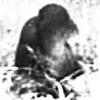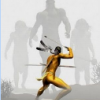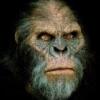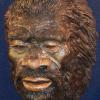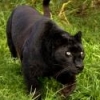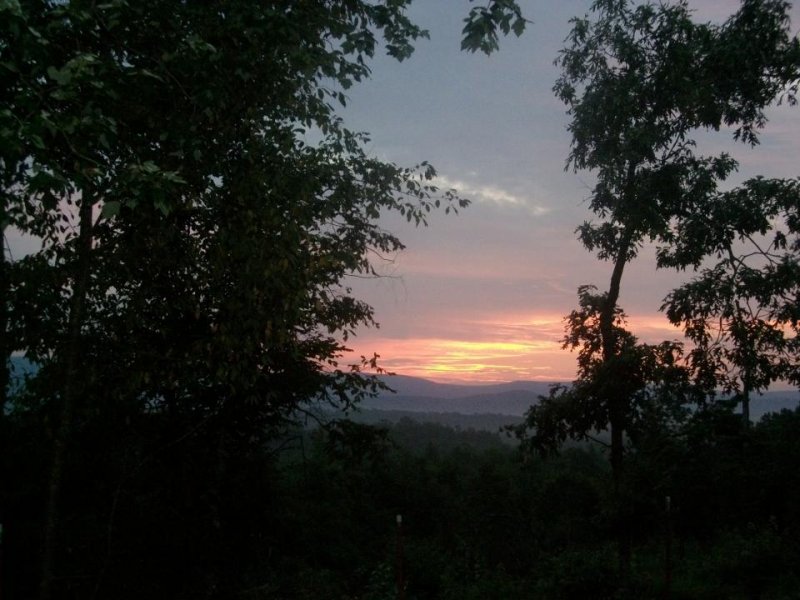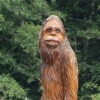Leaderboard
Popular Content
Showing content with the highest reputation on 07/15/2014 in all areas
-
Seriously, if in posting that above info are ya'll trying to out the location of "X"? If it is indeed that location.............Shame on all of you!6 points
-
Well you know what, when you've actually layed eyes on one of these things so are beyond the "Do they exist or not?" debate and have then gone on to research about them for the best part of 15 years with the understanding that so little of the powers that be even give the subject time of day, you have to wonder why that is, because there must be a reason for it.3 points
-
There are going to be alot of emotional reactions to any information revealed on this area it seems, because some folks are "invested" in this research physically, financially and emotionally. In moving forward with this thread, we will seek to add pertinent information from any viable and publicly available sources to better understand what is taking place in that region. There have been video and blog interviews given by the property owner who is named, the BFRO has previously researched (and documented) the same area, so there is ample information for anyone to make an educated determination as to the location of said property."Outing" the research location is not the objective. The objective is to understand what is happening in that region and why it is happening there specifically. Geographical information and maps can shed light on lay of the land, terrain, access, water sources, etc... Having said that, I have asked and fully expect to review any property information before we determine what gets posted on the forums.1 point
-
There was a time when several of the NAWAC founders felt it was their duty to publish and expose another groups research spot. If it is exposed, I'l just say that what goes around comes around.1 point
-
Stan- This info is pertinent, questions were asked if NAWAC was operating on 10 acres. If we can not get a straight answer on this, then I feel it is relevent info to figure out. If the echo incident happened on a 10 acre plot, I would think a strong reconsideration of tactics should be recommended.1 point
-
Roguefooter, the noise that bear made was not a whoop.1 point
-
some pics of the terrain around here. Linville gorge, mountains in Burke county, small water fall with good pic of what the understory is like in most places here, and a pic of the sunrise looking at Table Rock located in the Linville gorge. They actual look a little similar.1 point
-
@ David NC, yes sir it is. "BUT" it can be brutal to navigate especially this time of year. Thick underbrush, thorny vines that are thick as thieves that will trip you in a heart beat and rip through skin and clothing. And the flipping ticks, spiders and chiggers are a less than wanted bonus! Terrain is rarely level off paths and rocky as sin. Level ground can take you to steep drop downs where you have to hold on to trees to make your way to the bottoms. I do not know the exact location of X but I am familiar with the area and it's just as brutal there as it is here. I don't blame Brian for his exit, I'm surprised he lasted as long as he did, he demonstrated more patience than I could possess. JMO, NAWAC is doing the best they can, Brian was more than open in his sharing of the information that he did release. I followed this thread daily when I could and read with interest so many things that they experienced there that we had experienced here in the past. It actually felt good to know that others were experiencing the same things that we had sharing the same national forest area. JMO, it's sad that when this stuff happens, the ones who experience it, "can't prove it". There's no set time that this stuff happens, people can't be locked, cocked and ready to rock 24/7. The stuff just happens when it does. But eventually persistence pays off and kudos to those who have the vigilance and patience to "get-r-done".1 point
-
See-te-cah lets be fair. I counted the posts from the last post Bipto made before stating that he was off to Disneyland till he came back with the goodbye and the outpour of his thoughts, There were 303 posts and of all of those I bet less than 5 real questions. If you were in his shoes I know you would not have said the things he said before he left, but would you have waded thru that when a lot of the thread was being sidetracked before you left?1 point
-
Inability to respond? No, it was a refusal to respond, and he admittedly refused to read the questions about what he'd presented.1 point
-
1 point
-
If the reports about the skeletons taken to the Smithsonian are correct, the skull sutures are different than human. If you are looking for bones it would be best to know what is normal for humans so that abnormal skull sutures would be obvious. Several of the old reports also talk about double rows of teeth. I have asked several close witnesses about that and none recall seeing double teeth. But the teeth are probably the last thing you want to look at if you have an encounter. If you see teeth you are probably in big trouble. Certainly mortality could occur at all different ages so size might not be much of an indicator. What I think were juvenile BF footprints I found with larger more likely BF footprints looked very human to me. If so, the foot bones might be so close that only an expert could tell the difference. Certainly anything other than strange skull sutures and double teeth would probably beyond my ability to differentiate unless everything was very large. And you are quite right about authorities. If a skeleton looks anything like a human the first people called will be law enforcement. They might not be able to tell the difference and assume it is a human skeleton and off it goes to a pathologist to determine the cause of death. What happens at that point when the pathologist realizes that it is not human would be either to call in local university anthropologists, or worse yet the Smithsonian. The Kennewick Man was a good example of what can happen. The skeleton was found washing out of the banks of the Columbia river. Law enforcement was called as it was uncertain if the skeleton was Native American or a more recent murder. Only when a stone arrow point was found embedded in the hip of the victim was it determined it was ancient. The skull features were more Asian than Native American which got science interested. The US Government tried to have the skeleton reburied rather than let it be studied by scientists and only a last minute court order prevented immediate reburial. This happened to an obvious human that was different than the Governments notion of history. Imagine what they would do with a BF skeleton in their hands.1 point
-
There also appears to be somewhat of a history of activity in that (specific or approximate) area, at least according to the BFRO. Given the involvment of at least one of the listed Investigators, this is probably the same location: http://www.bfro.net/avevid/ouachita/opreport.asp INTRODUCTION The Ouachita Uplift, located in southeastern Oklahoma and southwestern Arkansas, is a complex system of rugged and heavily forested mountain chains. Many springs, creeks, and rivers exist throughout the region, in addition to a few man-made lakes. Logging is the primary industry, followed by tourism. The region is sparsely populated and it is not unusual for local families to trace their occupancy of the area back to the 19th century. Sasquatch sightings and accounts, including those from Native American sources, date back through many generations. Past visits to this part of the state indicate that the existence of this species is a commonly accepted concept, and it seems that everyone has some story or sighting to share. Relatively few people in the area have computers or Internet access, nevertheless, the BFRO has received several reports relating to regional sightings, some of which are accessible to the public via the BFRO web site. BACKGROUND In May 2001, the Oklahoma BFRO team made contact with a retired gentleman who has lived in SE Oklahoma his entire life. In addition to his home property, this man also owns land at an extremely remote location in the nearby mountains. He built a cabin on this land several years ago and often goes there with his family, sometimes staying for days at a time. Although the place is usually very peaceful, the family has also experienced unusual occurrences over the years. Strange, extremely loud vocalizations are sometimes heard after dark. Family members, many of whom are lifelong hunters and skilled outdoorsmen, cannot identify what kind of animal makes these noises. Rocks sometimes come hurtling from the nearby mountainside, occasionally even striking the roof of the cabin. Now and then tools and other belongings left at the cabin are found to be mysteriously disturbed. The Oklahoma team accepted an invitation to visit the cabin site. An overnight stay, a survey of the area, and further interviews with the property owner and other family members convinced the team that this location was worthy of an intense investigation by the BFRO. It was out of this belief that the concept for the Ouachita Project expedition was born. EXPEDITION TEAM Roger Roberts, Private Investigator (Oklahoma) -- Expedition Leader and Coordinator Brett Elliott, Full-time Military (Oklahoma) -- Expedition Executive Officer, Logistician Alton Higgins, Assistant Professor, Biology (Oklahoma) -- Lead Scientist, Experiment Coordinator Reid Nelson, Anthropologist (New Mexico) -- BFRO Curator Representative, Primate Studies Consultant Curt Nelson, Research Microbiologist (Minnesota) -- Field Researcher, Science Consultant Dan Nedrelo, Biologist & Wildlife Photographer (Wisconsin) -- Field Researcher, Wildlife Consultant Mike Simpson, Clergyman (Alabama) -- Field Researcher, Base Camp Operations Jackie Castillo, Retired Nurse (Arkansas) -- Camp Nurse, Assistant Field Researcher Aaron Simpson, Student (Alabama) -- Assistant Field Researcher EXPEDITION MISSION Official documentation in southeast Oklahoma of the enigmatic species commonly known as sasquatch or bigfoot. EXPEDITION GOALS 1. To identify areas of sasquatch/bigfoot activity and/or habitation. 2. To organize and conduct searches for evidence of all kinds. 3. To thoroughly document and preserve physical evidence including, but not limited to, tracks, hair, scat, wildlife kills, and sounds. RESEARCH METHODS Historically, sasquatch activity in the region appears to increase during the fall and winter months. It may be that a scarcity of natural resources at that time of year forces the animals to approach human habitations in order to scavenge for food, thereby increasing the odds of detection. The Oklahoma BFRO team scheduled the expedition for late September/early October. All things being equal, a later date would have been chosen, closer to the heart of winter. However, other factors entered into the picture, including hunting seasons, moon phases, scheduling conflicts of participants, and weather concerns. In addition, choosing a time frame earlier in the fall provided at least the opportunity to schedule follow-up visits if warranted. Ascertaining the why, who, where, and when was just the beginning. Narrowing down the "what" possibilities, that is, the methodologies, involved a great deal of discussion and pre-planning. Research techniques in the BFRO, in general, have been and are being developed out of what we think we have learned about sasquatch behavior. Some of these approaches exploit preoccupations shared by all primates: food, curiosity, and sex. One of the experimental approaches selected for use was the so-called "False Camp." The idea arose from reported observations by backpackers of sasquatches walking up to tents and equipment in the absence of the camper (or even while campers were in their tents), possibly because of hunger but perhaps out of simple curiosity as well. The false camp in this situation was established a hundred yards or so from the base camp, far enough away so as to give an approaching animal confidence that it could not be seen through the dense forest, and came complete with tent, table, chairs, fire, and food-cooking scents. The camp was to be deserted a few hours before dawn, with hidden recording devices left running nearby. The team also decided to use the "Abandoned Vehicle" plan. The BFRO database includes many accounts of sasquatches evidencing inquisitiveness about abandoned vehicles. This curiosity may also extend to buses, trailer houses, campers, ATVs, etc. We are aware of a half dozen or so such accounts from Oklahoma (including two involving the vehicles of BFRO investigators). Therefore, we planned to park a vehicle at some distance from the camp, near a site where apparent hand prints were left on another vehicle last year, with the hope that a bigfoot would investigate. As indicated earlier, a third experimental approach was designed to exploit an interest in sex. The expedition team was excited about having access to primate pheromones provided by BFRO Curator Dr. Greg Bambenek. Several chips were obtained for use during the Ouachita Project. Participants in the BFRO's Skookum Meadow Expedition indicated that these "pheries" were yanked from the trees to which they were wired. EQUIPMENT Radios Each expedition member had access to hand held FRS radio units, which are compatible with all other FRS radios (FRS is the frequency allocated by the FCC for general public use). The main problem with these devices is that they have a limited range, but they are easy to use, inexpensive, widely available, and present no need for an FCC license. Video Cameras Four participants had Sony Handycams during the expedition. As most people are aware, these camcorders have a feature called "Nightshot" that enables them to record video at night, even in total darkness, using built-in infrared light (IR) emitters. When not recording, the units can also serve as night vision devices. Since much reported bigfoot activity takes place at night, Sony cameras sound perfect for research and documentation efforts undertaken by BFRO investigators, especially considering that some models are relatively affordable. Unfortunately, the Nightshot's range is limited. Even Handycams with the "Super Nightshot" ability are hampered by the jerky images it produces. Fortunately, the range limitation is a function of the built-in emitter, not the camera. It is possible to extend the night time video recording range of the Sonys by adding an auxiliary IR spotlight. Elliott had one of these for the expedition. In addition, M. Simpson built two IR spotlight systems with dramatic capabilities at an affordable price (less than $100 each). His devices attached to the threaded mounts on the bottom of Sony Handycams. EXPEDITION SUMMARY Saturday, 29 September 2001 Roberts, Elliott, Higgins, Castillo, and A. Simpson met at a designated location in the Ouachita Mountains of Oklahoma. A local resident, the owner of a remote cabin at the site of reported sasquatch activity, led the group in a convoy to the study site. Upon arrival at the cabin, at approximately 7:30 PM, it was evident that some kind of animal had visited the site. The owner thought it likely that a bear was the culprit and, indeed, A. Simpson discovered fresh bear scat behind the cabin. However, not all the evidence seemed to be indicative of bear activity. For example, something had managed to lift the heavy lid of a big chest-style freezer that sits outdoors, used for storing blankets and the like, and removed a large rolled mattress. The mattress had sustained serious damage, but there was no way of knowing if the damage had been inflicted by the same person or animal that removed it from the dead freezer. The thought of a bear bothering to go to the effort to remove the mattress seemed unlikely to most, if not all, of the BFRO team, not to mention the potential difficulty facing a bear attempting to lift the lid and take out the mattress. A careful search failed to reveal the presence of claw marks on the freezer/storage unit. Such marks were present and obvious on a nearby metal 55 gallon drum (containing cat food) that a bear had rolled around and tried to open. A second odd observation, again credited to black bear activity by the cabin owner, was of a piece of angle iron, extending from the side of the cabin and supporting a small solar-powered light, that was bent almost straight down. The plastic light unit did exhibit teeth marks that could have been made by a bear but, again, there was no way to determine whether the biter of the light fixture and the bender of the metal support were one and the same. Our doubts were founded on two ideas: First, we questioned the notion that bears would express much interest in inanimate objects not related to food. Bear behavior is often food driven and bears, who had been around the cabin on many occasions, had never before evidenced an interest in the small light or its support (or the dead freezer). Secondly, the angle iron supporting the light fixture projected from the cabin at a height of about seven feet. While none of the investigators at the site were bear experts, all questioned the ability of a black bear to reach to that height. There was nothing nearby that a bear could have climbed on to reach the support. The ground around the cabin is hard-packed and did not reveal tracks of any kind. [Note: In a personal communication (11 October 2001), BFRO investigator Julie Davis, who has done field research on bears, expressed doubts that the light fixture support could have been reached by any but the very largest of black bears. She described claw marks on a "bear tree" left by a 500 pound Colorado black bear that extended to seven feet, but concluded that "if you found a bear of that size in the (Oklahoma study) area it would be an important find."] The rest of the evening was spent determining room assignments, unloading gear, and reviewing orientation matters for presentation to the group at large after their arrival on Sunday. In addition, materials and methods for collecting physical evidence were evaluated, including use of the pheromone chips developed by Dr. Bambenek. Sunday, 30 September 2001 Roberts, Elliott, Higgins, and A. Simpson left to meet with the Nelsons, Nedrelo, and M. Simpson at a predetermined location. Elliott rode back to the study site with Curator Reid Nelson, Higgins rode back with Curt Nelson, and A. Simpson rode back with M. Simpson, his father. The elder Simpson was towing a 16-foot trailer with food and a great deal of gear for the expedition. The road to the study site is extremely rough. Two of the trailer tires, both on the same side of the trailer, had their side walls lacerated, forcing Simpson to complete the trip on the rims. After the newly-arrived investigators finished unpacking, the group spent a couple of hours in orientation. Roberts handed out packets containing background information and topographic maps of the area. He discussed the landowners' request that people travel everywhere in pairs when possible, with at least one of the individuals armed (because of bears). Higgins presented a tentative schedule of research activities for the week. Castillo discussed safety issues and what to do if an expedition member became injured. Simpson discussed the meal schedule and the need for volunteers to help with clean up following meals. The balance of the day was spent assembling and/or checking equipment. Elliott succeeded in getting the variety of radios to work with each other. No research activities were conducted Sunday evening out of the belief that the local sasquatch population, if present, would benefit from having at least two days and evenings (Saturday and Sunday) to get used to our presence. Monday, 1 October 2001 On Monday morning, before dawn, Higgins reported hearing a sound he couldn't identify. He described it as "a sort of loud, low, drawn-out moan, unlike anything I've ever heard." He said, "It literally gave me the shivers, something I don't remember happening before then. I've spent hundreds of nights sleeping in remote areas, usually without a tent. Pack rats have crawled on me, skunks have tried to get into my sleeping bag, and I've heard all kinds of weird noises, most of which I eventually learned, but I've never had an involuntary response like I did that morning." He had spent the night a couple of hundred yards away from the land owner's cabin and the other BFRO members; no one else heard the noise. He suspected it might have been the sound previously reported by local residents and family members and compared by them to a vocalization recording provided by the BFRO. Aaron Simpson left camp to return to his college later that day. Roberts and Elliott conducted additional site surveys, identifying potential sasquatch "listening posts" and field testing equipment. Meanwhile, Higgins, Nedrelo, and the Nelsons deployed a pheromone chip at the top of a mountain near the base camp. C. Nelson planned to hike back to the site that evening and spend the night in a deer stand, observing the chip from a distance. The "false camp" was established upstream from the cabin, following BFRO director Matt Moneymaker's recommendations. It included a tent, chairs, table, food, and a campfire. That evening, three volunteers (Nedrelo, Castillo, Higgins) departed for the camp and stayed until a few hours before dawn Tuesday morning. They reported hearing barred owls, screech owls, and coyotes, in addition to some sounds they compared to suspected bigfoot vocalization recordings. The unknown sounds were too faint to record. The group was startled at about 10:00 PM by what seemed to be a rock forcefully impacting a tree trunk only a short distance away. Others monitoring different locations also reported barred owls and coyotes. M. Simpson, located about one half mile west of camp, heard the sound of a heavy branch snapping at 1:40 AM. Tuesday, 2 October 2001 C. Nelson returned to base camp shortly after dawn. He had not communicated with team members during the previous night, preferring instead to maintain radio silence. He reported no activity in his area of observation overlooking the pheromone chip. The camera and tape recorder left at the "false camp" were retrieved shortly before noon. The camp showed no obvious signs of having been visited, nor did the recording devices indicate any unusual activity. Roberts and Elliott took Simpson's trailer wheels back into town for replacement tires, a task which required much of the day due to the remoteness of the expedition site. Following much discussion, it was decided to greatly expand the expedition's monitoring area. Higgins and C. Nelson decided to backpack upstream (east) from base camp a few miles and spend the night, placing them out of radio contact. They departed base camp around mid-afternoon, deploying a pheromone chip about 1/3 mile from base camp at a spot where a side drainage enters the creek bed. Possible bigfoot tracks had been seen in this area on previous visits. Later in the afternoon, R. Nelson drove to the top of nearby mountain, approximately 2 miles from base camp, to spend the night in his pickup. The intent was to act as "bait" or as an item of curiosity to a sasquatch with the hope that an animal might approach the seemingly abandoned vehicle. Nelson was careful to park in a dry, dusty spot suitable for recording the tracks of any unobserved animal advancing near the truck. Unfortunately, his location proved to be out of radio contact from the recording site. Roberts and Elliott also departed late afternoon in order to set up at a new recording site west of the base camp. M. Simpson followed in his truck and then continued from there on foot to a point approximately 1 mile north of the recording site. Upon arrival he hung a pherie in a tree and positioned himself, just before dark, in a portable tree stand where he could observe the chip. Nedrelo and Castillo remained at the base camp to monitor sounds and to be ready to respond to emergencies. Unfortunately, tests revealed that only broken communications were possible between the base camp and other team members. Conditions were clear and calm, the temperature was in the mid-50s, and the humidity was ~85%. At 7:45 PM Simpson reported hearing the sound of a branch snapping. Fifteen minutes later he radioed Roberts and Elliott that sounds similar to purported sasquatch vocalization recordings were emanating from the forest southwest of his position. These were only the first of a number of peculiar sounds detected by him that night. At approximately 11:30 PM and continuing for the next two hours, Simpson heard something with heavy footfalls pacing near his location, occasionally breaking branches. Whatever it was, the creature was obviously interested in him, or the odor of the pherie, or both. Unfortunately, he was not able to see the animal through the dense vegetation, even with the aid of his IR spotlight. He finally decided to radio Roberts and Elliott and ask them escort him from the area. The unseen visitor apparently heard Simpson speaking into his radio, because it immediately but slowly retreated to the south and was not heard for the next hour. However, as Roberts and Elliott drew near Simpson's location at about 2:40 AM, the creature, which had apparently positioned itself along the trail south of the tree stand, fled to the north, past Simpson's location, running up a rocky stream bed. Simpson later said, "It covered more rough area quicker than anything I can conceive." The noise made by its running was described as "definitely bipedal" and compared to the sound of someone sprinting at the edge of the shallow water on a beach. With Roberts and Elliott's arrival, Simpson dismantled his tree stand and the three returned to the recording site with no further incident. Wednesday, 3 October 2001 Nedrelo and Castillo reported hearing no unusual sounds during their vigil the previous night, although they did hear a number of barred owls and coyotes. R. Nelson returned to base camp shortly after dawn. He detected no unusual activity during the night at his mountaintop location. He decided to leave when several large logging trucks began moving through the area just before dawn. Higgins and C. Nelson returned to base camp in the middle of the afternoon. They had discovered a very large (at least 1 m wide and 1.5 m long) bedding area in tall grass, along with impressions in the leaf litter leading to the bedding site that were the right size and proportions for sasquatch tracks. Other large possible tracks were observed elsewhere, but none were clear enough to be ascribed to a sasquatch. Black bear sign was everywhere, but no bears were seen. Simpson was debriefed for hours regarding the events of the previous evening. Recordings made by him at the time were reviewed and alternate explanations for all aspects of the experience were debated. Although not wanting to jump to conclusions, after careful assessment and reflection, Simpson and the other team members deduced that the odds were very high that a sasquatch had approached him as he sat in his tree stand. The decision was made to wait until the pre-dawn hours of Thursday morning for the next venture into the field. Thursday, 4 October 2001 The expedition team arose at about 3:30 AM and departed for several locations. Roberts, Elliott, R. Nelson and Nedrelo deployed at the same recording location of Tuesday night. M. Simpson returned to the spot of his previous encounter. C. Nelson and Higgins hiked to the top of the mountain immediately north of the base camp and stationed themselves in separate positions in the general vicinity of a previously placed pheromone chip. Conditions: Clear, no wind, temp. mid-50s, humidity ~90%. Only C. Nelson reported hearing possible sasquatch vocalizations, originating from quite a distance to the NW. The pherie was collected after daybreak and the men hiked back to camp. At dawn, Curator R. Nelson and Elliott left the recording site to meet with Simpson at his tree stand location. They asked him to recount his experiences of Tuesday night and recorded the account on video. A thorough inspection of the area was conducted, but no evidence was discovered in the rocky terrain. The pherie was retrieved at 9:30 AM and they departed for camp. Shortly after everyone returned to base camp, Higgins and Elliott retrieved the last pheromone chip, and recovered the tent and other gear deployed at the "false camp". Fruit and candy left at the false camp were still undisturbed. However, upon arrival at the pheromone chip, a fresh bear scat was observed about thirty feet in front of it. The expedition team had originally planned to spend one additional night in the field. However, rain was in the forecast for Friday and the low-water crossings leading to the study site can quickly become flooded. Since several investigators would need two days to return home, and since the team was not certain what difficulties would be involved in getting the trailer and gear out of the canyon, the decision was made to end the expedition a day early. The gear in Simpson's trailer was distributed among the team's pickup trucks and SUVs to allow him to make the steep ascent out of the study location. Shortly after departure, Simpson suffered another lacerated sidewall to a tire on his truck. This was replaced with the spare and all vehicles made it out without further mishap. After returning to paved roads, Simpson's gear was shifted back to his trailer. Unfortunately, another tire was then noticed to have gone flat on his truck. Roberts, Nedrelo and Castillo assisted Simpson; they had to travel a great distance, driving into Arkansas, to purchase new tires. Elliott guarded the trailer with its gear while Higgins and the Nelsons departed for the Oklahoma City area. Once Simpson's truck was repaired, the remaining expedition members departed for their homes. Friday, 5 October 2001 Two more members of the host family arrived at the study site to spend the weekend. They had hoped to meet the expedition team and were disappointed to find that everyone had already departed. One man, a nephew of the land owner, is an active hunter who has spent time with BFRO investigators. He is familiar with animal sounds common to the area. Family members later reported to Roberts that activity levels increased soon after the departure of the BFRO team, including rock throwing and vocalizations. In fact, activity levels increased to the point that our host, a native of the area and not a man who frightens easily, was compelled to leave his cabin and return home. Roberts was also informed that the family talked with two game rangers who expressed great interest in the BFRO expedition. These men were said to have information regarding similar experiences in the area as those mentioned in this report. Plans are being made to meet with them and others having land management responsibilities. [Postscript: In the next few weeks following the expedition, the BFRO received several independent reports of sasquatch activity near the study site. Observations submitted by witnesses included a hand print, footprints, suspected vocalizations, and a sighting. The sighting, made by a hunter retired from the military, was near the location of Simpson's encounter. The Oklahoma BFRO team intends to return to the study site.] This concludes the account of the BFRO's Fall 2001 Ouachita Project expedition. Copyright © 2014 BFRO.net1 point
This leaderboard is set to New York/GMT-05:00

